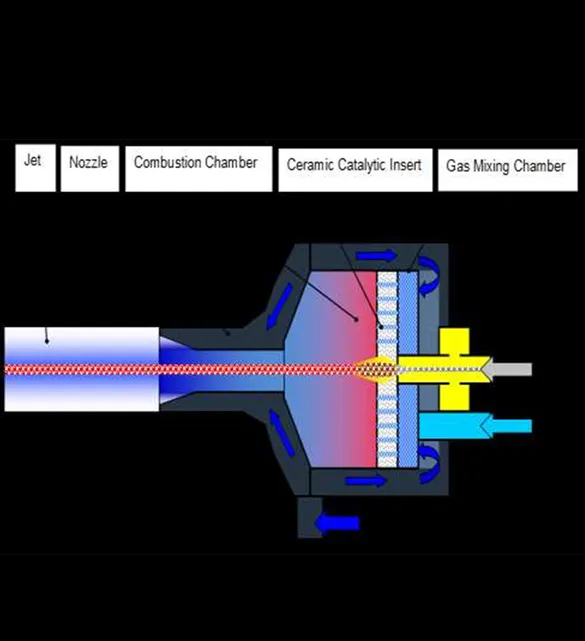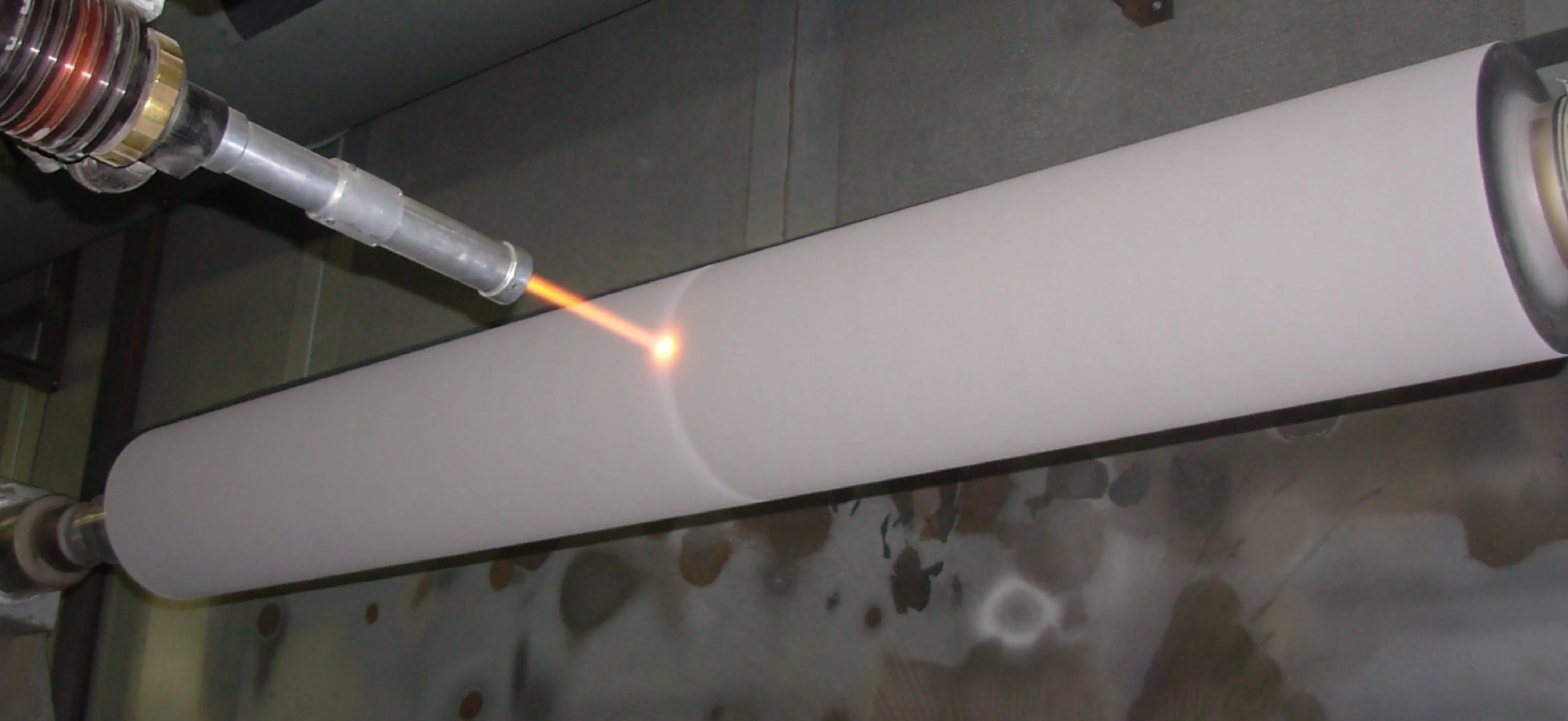

High-Velocity Air Fuel (HVAF) – is a thermal spray process with a low combustion temperature (1,960-2,010°C | 3,560-3,650°F) and high particle velocities (800 to over 1,000 m/s | 2,625-3,281 ft. /sec.) that result in low-oxidized, ductile, non-porous, high-bond carbide and metal coatings. The spray rate is up to 500 g/min (66 lbs. /hr.), making the process much faster and providing a significant advantage over HVOF coatings.
The HVAF coating Gun is a small jet engine that combusts compressed air and LPG / propane/ propylene / MAPP fuel and generates a jet of metal particles with a velocity from 800 to over 1000 m/sec. Such particles form incredibly dense and tough coatings. Our signature hvof coating process are tungsten carbide coatings (WC12Co, WC-10Co-4Cr, etc.) which are non-permeable to gas, having a hardness of 1,400-1,600+ HV300. Regardless of their high hardness, these high velocity oxy fuel coatings are not brittle since decarburization or oxidation does not occur in the comparably low-temperature HVOF process.
The novel HVOF coating process enables the deposition of dense, wear-resistant hard metal coatings with excellent technical properties.
Our tc coatings exhibit high density and hardness, combined with excellent ductility. It lowers the coating cost due to the efficient use of the systems’ combustion energy resulting in 4-8 times higher spray rates and deposits than conventional thermal spray standards. Oxidant and cooling gas: Compressed air, Optional oxygen injection in combustion air.
Fuel: propane, propylene, propane-butane, natural gas.
The relatively low combustion temperature of the air-fuel mixture and the feedstock axial injection ensure the quality and efficiency of Endurance coatings. The long combustion chamber with a low gas velocity provides sufficient time for the gentle heating of powder particles. The nozzle has a large diameter required to pass through the volume of nitrogen present in the combustion air and accelerate the material. The extended nozzle ensures no contact of the nozzle walls with the particles for feedstock acceleration, typically from 600 to over 1,000 m/s. The Ceramic Catalytic Insert provides a wide range of stable combustion parameters in the combustion chamber.

Coating Quality: The combustion temperature in air-fuel mixtures for HVAF coating is typically 1000°C lower than the HVOF process, ideal for gradually heating the feedstock particles of metals and cemented carbides to the melting point. The initial oxygen content in the combustion gas mixture is five times lower in the HVAF process than in any HVOF process, preventing the oxidation of metals and the decomposition of carbides. The above factors allow powder feedstock material in the applied coating to retain its original ductility even if the hardness of the cemented carbide coating exceeds 1600 HV300.
Heating Efficiency: The spray particles in the combustion chamber heat at high pressure, at the most efficient heat transfer level. The size of the chamber plays a significant role in providing a long residence time for the heating of the spray particles. This efficient energy transfer methodology results in higher spray rates than other high-velocity spraying methods. Essentially, the economic cost of the HVAF-applied coatings is directly proportional to heating efficiency. Acceleration Efficiency: The nozzle’s large diameter propels the acceleration of the spray particles to the gas velocity.
Uniformity of Coating Quality: Since the diameter of the spray particle jet is much smaller than the nozzle diameter, the influence of the nozzle walls on the spray particle velocity is negligible. It provides an even acceleration of the particles with improved consistency of the coating structure.
HVOF coating is an innovative surface engineering technique that utilizes thermal spray technology to revitalize or enhance the surface properties and even the geometry of components. This process effectively extends equipment life through: Increased Erosion and Wear Resistance: HVOF coatings offer superior protection against wear and tear, resulting in longer equipment lifespan and reduced maintenance needs. Enhanced Corrosion Protection: HVOF coatings act as a robust barrier against corrosive elements, safeguarding components from degradation and ensuring their functionality over extended periods. By improving both wear and corrosion resistance, HVOF coating emerges as a powerful tool for optimizing equipment life and maximizing operational efficiency.
The High Velocity Oxygen Fuel (HVOF) process involves continuously feeding fuel and oxygen into a combustion chamber where they ignite and burn. The fuels can be either gaseous (hydrogen, methane, propane, propylene, acetylene, natural gas, etc.) or liquid (kerosene, ethanol, etc.).
Tungsten carbide reigns supreme as the most popular material for HVOF spraying. However, other materials, like chromium carbide, nickel alloys, and cobalt super alloys, also find favor in this method.
HVOF coatings typically range from 0.005-0.010 inches (0.127-0.254 millimeters) thick but can reach up to 0.50 inches (12.7 millimeters) for enhanced wear resistance and corrosion protection.
The HVOF coating process reaches incredibly high temperatures, around 3,000°C (5,432°F). This extreme heat melts the coating material, allowing it to form a strong bond with the surface it's being applied to.